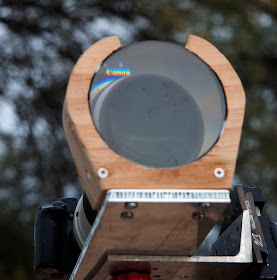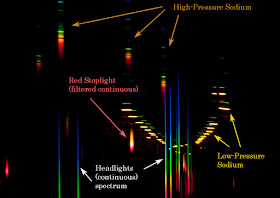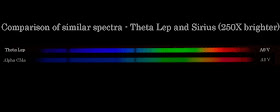
 I love posting about the work that goes on at the Richard F Caris Mirror Lab. In my nearly 30 years there, I'm justifiably proud of the work we're doing - making telescope mirrors upwards of 28 feet (8.4 meters) in diameter is an interesting juxtaposition of steel mill technology and the finest measurements you can imagine (thousandths of a human hair). Unfortunately, I can't post about my current work (not secret, just sensitive), but the Lab is making some good progress on major projects. A couple months back, I posted about the unveil of our latest glass casting - another 8.4 meter mirror destined for the center position of the Giant Magellan Telescope. Once out of the oven, the work starts, and I've brought the camera in a couple times to document the newest glass.
I love posting about the work that goes on at the Richard F Caris Mirror Lab. In my nearly 30 years there, I'm justifiably proud of the work we're doing - making telescope mirrors upwards of 28 feet (8.4 meters) in diameter is an interesting juxtaposition of steel mill technology and the finest measurements you can imagine (thousandths of a human hair). Unfortunately, I can't post about my current work (not secret, just sensitive), but the Lab is making some good progress on major projects. A couple months back, I posted about the unveil of our latest glass casting - another 8.4 meter mirror destined for the center position of the Giant Magellan Telescope. Once out of the oven, the work starts, and I've brought the camera in a couple times to document the newest glass.Since the post linked above, as shown at left from 27 January, the outer Inconel bands have been removed, as have the outer tub walls and the soft refractories have been scrubbed from the outside diameter of the substrate. At right is a 2-frame panorama showing the long view past the central hole. The streaks are the last remnants of soft refractories that have yet to be cleaned off - which they likely were the next day! The next step is to lift the glass off the oven to start mold removal, which is encased inside the glass. The crew hadn't let the moss grow as the mirror cooled in the oven - the lifting fixture had already been assembled in advance!

 When I next brought in the camera a couple weeks later, the lifting fixture, called a spider because of its spindly structure was in place on the curved surface of GMT4. Still attached to the crane, they were adjusting the individual substars to properly balance the weight between them.
When I next brought in the camera a couple weeks later, the lifting fixture, called a spider because of its spindly structure was in place on the curved surface of GMT4. Still attached to the crane, they were adjusting the individual substars to properly balance the weight between them.The closer image at right shows each of the 6 points of the spider was sitting atop a jack stand, fine vertical motion through a screw jack and load cell with readout to measure the weight distribution of the spider. On the mezzanine level in the background, the top "cone" of the oven can be seen in its storage area. Once the spider was centered properly and the 36 annular attachment points were properly adjusted for load sharing, the next step was gluing the spider to the front face of the substrate.

 A few days later and that was accomplished too! In the image shown at left, some of the annular pads can be seen with black RTV oozing out. Not shown here is a metering dispenser that mixes the 2-part RTV adhesive from 5 gallon containers and pumps it out a hose that is held in place in those holes to pump the compound into the gaps between the steel annulus and the glass. Once it hardens it will be strong enough to lift the substrate plus mold, and hold it upright in the cleanout stand for mold removal, which will take a couple months. Just the glass of the 8.4 meter mirrors weighs about 20 tons, and the weight of the mold plus hard refractories almost doubles the weight to 35 tons. But with time, as the hard refractories attached to the back of the mirror, and the soft refractories imbedded in the glass are removed, slowly the weight will drop to the glass-only weight.
A few days later and that was accomplished too! In the image shown at left, some of the annular pads can be seen with black RTV oozing out. Not shown here is a metering dispenser that mixes the 2-part RTV adhesive from 5 gallon containers and pumps it out a hose that is held in place in those holes to pump the compound into the gaps between the steel annulus and the glass. Once it hardens it will be strong enough to lift the substrate plus mold, and hold it upright in the cleanout stand for mold removal, which will take a couple months. Just the glass of the 8.4 meter mirrors weighs about 20 tons, and the weight of the mold plus hard refractories almost doubles the weight to 35 tons. But with time, as the hard refractories attached to the back of the mirror, and the soft refractories imbedded in the glass are removed, slowly the weight will drop to the glass-only weight.So in the next week or so that they give the glue to fully cure, the casting crew will put on their hardhats and protective gear for steel construction - assembling the washout stand that will provide an environmental enclosure for protecting the mirror against thermal shock (high-pressure water is used for soft refractory removal, and in low humidity can give dangerous temperature gradients), as well as providing safe access to all parts of the mirror for mold removal. The pieces are shown at right with the handling ring in the upright position - in a couple more weeks, the mirror will be mounted within the ring and steel structure providing a cocoon of protection around it.
WARNING: 3D Anaglyphs beyond this point!

 Now for the good stuff! Anyone who knows me knows I'm a 3-D stereo nut, and more and more am shooting image pairs to make anaglyph images to view in stereo. So grab your red/blue glasses and be amazed at the following shots. Some of these from above are one image of the pair, others weren't used above, but these are my favorites of those I've taken recently. Most are likely hyperstereos - where the separation between the two images are a little wider than your eyes. The stereo effect is exaggerated somewhat, but oftentimes, that is welcome in complicated structures like the spider, shown at left. The image of just the curved substrate is more subtle at right, where there is not a lot of structure to focus on to provide depth clues. In fact, I'm glad the streaks are still there as they provide something for your eyes to focus on to provide depth.
Now for the good stuff! Anyone who knows me knows I'm a 3-D stereo nut, and more and more am shooting image pairs to make anaglyph images to view in stereo. So grab your red/blue glasses and be amazed at the following shots. Some of these from above are one image of the pair, others weren't used above, but these are my favorites of those I've taken recently. Most are likely hyperstereos - where the separation between the two images are a little wider than your eyes. The stereo effect is exaggerated somewhat, but oftentimes, that is welcome in complicated structures like the spider, shown at left. The image of just the curved substrate is more subtle at right, where there is not a lot of structure to focus on to provide depth clues. In fact, I'm glad the streaks are still there as they provide something for your eyes to focus on to provide depth.
 Here are a few more - at left is another before the spider was placed, but from a different perspective than the one just above. The mezzanine level is shown, though dark, with subtle depth across the mirror till the pipes and tubing on the far wall are encountered.
Here are a few more - at left is another before the spider was placed, but from a different perspective than the one just above. The mezzanine level is shown, though dark, with subtle depth across the mirror till the pipes and tubing on the far wall are encountered.At right, another wide shot showing the spider in place, this time with the lights on in the mezzanine level - strong 3D effect through the spider structure and even up past the oven cone.

 Wrapping up with a couple close-ups of the spider atop the GMT4. I like the view at left that shows a bare strip of glass across the entire mirror chord, showing both the hexagonal structure of the casting, as well as the lines of annular supports.
Wrapping up with a couple close-ups of the spider atop the GMT4. I like the view at left that shows a bare strip of glass across the entire mirror chord, showing both the hexagonal structure of the casting, as well as the lines of annular supports.At right is a close-up of an annular support after gluing, showing the port into which the RTV was injected. If you look carefully under the center support, you can see where the RTV oozed through the annulus of the steel ring and seeped into its ID.
The casting crew is making fast progress - the place looks drastically different almost every day. I'll try to keep up in some documentation, including the 3D if you enjoy them - comments always welcome! I'm thinking about a bulk purchase of the anaglyph glasses, so do let me know if you don't have them, or would like me to find some for you...










































